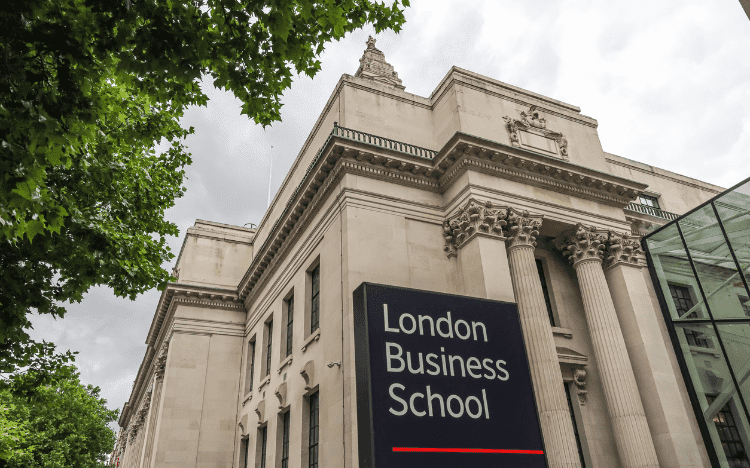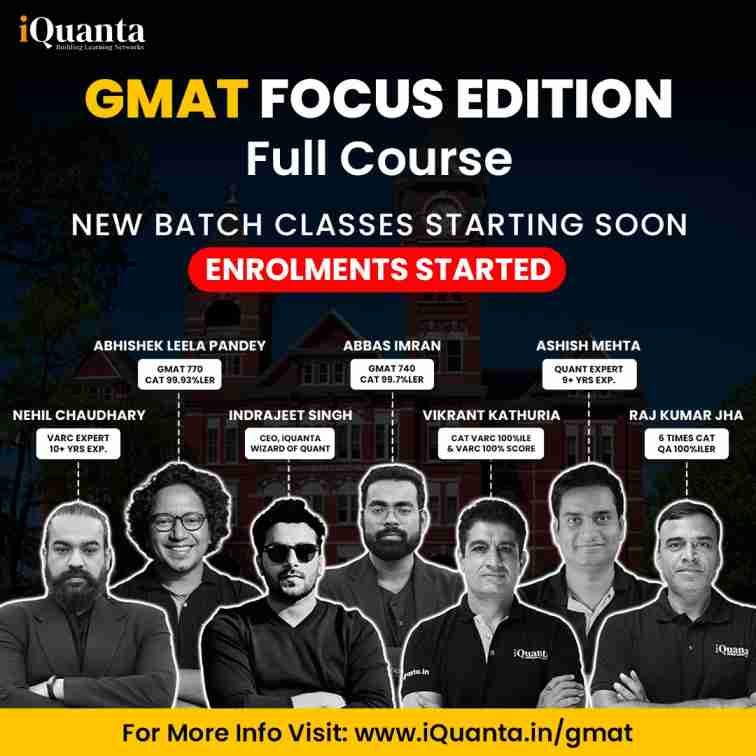A Master in Management (MiM) degree is an excellent choice for recent graduates and early-career professionals seeking advanced management skills and global career opportunities. The GMAT (Graduate Management Admission Test) is a pivotal component of the MiM application process, serving as a benchmark for assessing your readiness for graduate-level business studies. In this comprehensive article, we will explore the detailed admission process, timelines, top MiM programs, GMAT cutoffs, and the opportunities that await you post-graduation.
Understanding the GMAT
Before diving into the specifics of the MiM application process, it’s essential to grasp what the GMAT entails. The GMAT is a standardized test designed to evaluate your analytical writing, quantitative, verbal, and integrated reasoning skills. It is a critical component of your MiM application, showcasing your readiness for the rigorous academic environment of business school.
Preparing for the GMAT
Effective preparation for the GMAT is key to securing a competitive score. Here are some tips to help you succeed:
- Understand the Format: Familiarize yourself with the structure of the test. The GMAT consists of four sections: Analytical Writing Assessment (AWA), Integrated Reasoning (IR), Quantitative, and Verbal. GMAT Focus Edition now consists of three sections – Quantitative Reasoning, Verbal Reasoning, and Data Insights.
- Study Resources: Utilize high-quality prep books, online courses, and practice tests. Popular resources include the Official Guide for GMAT Review, Manhattan Prep, Kaplan, and iQuanta online coaching.
- Consistent Practice: Regular practice is crucial. Focus on your weaker areas while maintaining your strengths. Set a study schedule and stick to it.
- Time Management: Develop strategies to manage your time effectively during the test. Each section has a strict time limit, so practicing under timed conditions is essential.
- Mock Tests: Take full-length mock tests to simulate the test day experience and build stamina. Analyze your performance to identify areas for improvement.
GMAT Cutoffs and Requirements
While a high GMAT score is beneficial, it is not the sole criterion for admission. Schools consider your overall profile, including academic performance, work experience, and personal attributes. Here are some insights into GMAT cutoffs:
- Top Tier Schools: Programs like HEC Paris, LBS, and INSEAD typically have higher GMAT cutoffs (around 680-710).
- Mid Tier Schools: Schools such as ESSEC, IE, and WHU often have cutoffs in the range of 650-680.
- Lower Tier Schools: Some institutions may have cutoffs around 600-650, focusing more on the holistic profile of applicants.
Eligibility Criteria
To be eligible for a MiM program, applicants generally need to meet the following criteria:
- Undergraduate Degree: A bachelor’s degree from a recognized institution. The degree can be in any discipline, although some schools may prefer candidates with a background in business, economics, or related fields.
- GMAT/GRE Scores: A competitive GMAT or GRE score. While the GMAT is often preferred, many schools accept GRE scores as well.
- Work Experience: MiM programs typically target candidates with little to no full-time work experience. However, internships, part-time jobs, and extracurricular activities are valuable.
- Language Proficiency: For non-native English speakers, proof of English proficiency through tests like TOEFL or IELTS is required.
- Other Requirements: Specific schools may have additional requirements, such as prerequisite courses, a minimum GPA, or participation in specific extracurricular activities.
The Application Process
The MiM application process is rigorous and multifaceted, requiring careful preparation and attention to detail. Here’s an expanded look at each component of the application process, along with a general timeline for submitting applications to top MiM programs.
1. GMAT Score
A competitive GMAT score is a critical component of your MiM application. Aim for a score that aligns with or exceeds the average scores of your target schools. A higher GMAT score can bolster your application, especially if other areas of your profile are less strong.
2. Academic Transcripts
Your undergraduate academic records are a significant part of your application. Ensure your transcripts are up-to-date and accurately reflect your academic performance. If your transcripts are not in English, have them translated and notarized.
Step-by-Step Process:
- Request official transcripts from your undergraduate institution.
- Ensure that all courses, grades, and degrees are correctly recorded.
- If applicable, provide an explanation for any gaps or anomalies in your academic record.
3. Resume/CV
Your resume or CV should highlight your educational background, work experience, internships, extracurricular activities, and leadership roles. Admissions committees look for candidates who demonstrate management potential and diverse experiences.
- Key Elements:
- Education: List your undergraduate degree, major, institution, and graduation date.
- Work Experience: Include full-time positions, internships, and part-time jobs, focusing on responsibilities and achievements.
- Extracurricular Activities: Highlight involvement in clubs, organizations, and community service.
- Skills and Certifications: Mention relevant skills (e.g., languages, technical skills) and certifications.
4. Letters of Recommendation
Most MiM programs require two or three letters of recommendation. Choose recommenders who know you well and can provide detailed insights into your abilities and character. Professors, employers, and supervisors are ideal choices.
- How to Approach Recommenders:
- Select Recommenders: Choose individuals who can speak to your academic performance, leadership qualities, and professional potential.
- Provide Context: Share your goals, why you are applying to the MiM program, and any specific points you would like them to emphasize.
- Give Ample Time: Request recommendations well in advance to ensure they have enough time to write a thoughtful letter.
5. Statement of Purpose (SOP)
Your SOP is a personal essay that explains your motivations, career goals, and why you are interested in the Master in Management program. This is your opportunity to showcase your personality and articulate your vision clearly.
- Tips for Writing an Effective SOP:
- Be Authentic: Write in your voice and be honest about your experiences and aspirations.
- Highlight Fit: Explain why the specific MiM program is a good fit for you and how it aligns with your career goals.
- Structure: Organize your SOP with a clear introduction, body, and conclusion. Each paragraph should flow logically to the next.
6. Essays
Some schools require additional essays that explore specific aspects of your background or your fit with the program. These essays are an opportunity to provide more depth to your application.
- Common Essay Topics:
- Career Goals: Describe your short-term and long-term career goals and how the MiM program will help you achieve them.
- Leadership Experience: Discuss a time when you demonstrated leadership skills and what you learned from the experience.
- Cultural Fit: Explain how your background, values, and experiences align with the school’s culture and values.
7. Interview
If shortlisted, you may be invited for an interview. The interview is an opportunity for the admissions committee to get to know you better and assess your fit for the program. Prepare to discuss your application, experiences, and aspirations confidently.
- Interview Preparation:
- Research: Learn about the school’s program, faculty, and culture.
- Practice: Conduct mock interviews with friends, mentors, or career services.
- Reflect: Be ready to discuss your resume, SOP, and essays in detail.
General Admission Timelines
While specific deadlines can vary by school, the general timelines for Master in Management program applications are as follows:
| Application Round | Application Deadline | Interview/ Further Notification | Final Decision Notification |
| Round 1 | September | October | November |
| Round 2 | January | February | March |
| Round 3 | March | April | May |
It varies across colleges but this is roughly followed for Masters in Management through GMAT. There are more than 3 rounds as well for top-tier colleges like INSEAD and a few of them follow rolling basis admission process as well.
Top Master in Management Institutes
Choosing the right MiM program can significantly impact your career trajectory. Here are some of the best MiM programs globally, along with their GMAT score expectations:

- GMAT Score: 690-710
- Program Highlights: HEC Paris is renowned for its strong emphasis on leadership and innovation. The program offers a comprehensive curriculum, experiential learning opportunities, and strong ties with industry leaders.

- GMAT Score: 680-700
- Program Highlights: LBS offers a global perspective on management education, with diverse student cohorts and extensive networking opportunities. The program focuses on developing strategic thinking and leadership skills.

- GMAT Score: 650-700
- Program Highlights: Known for its international orientation, INSEAD offers a multi-campus experience and a diverse student body. The program emphasizes global leadership and entrepreneurship.

- GMAT Score: 630-670
- Program Highlights: ESSEC combines academic excellence with practical experience through internships and corporate partnerships. The program offers specialized tracks in various management fields.

- GMAT Score: 640-680
- Program Highlights: IE is known for its innovative approach to business education, focusing on entrepreneurship and technology. The program encourages creativity and strategic thinking.
Post-Master in Management Opportunities
Earning a Master in Management degree opens a myriad of career opportunities. Here are some potential career paths:
- Consulting: Many MiM graduates enter the consulting industry, working with firms like McKinsey, BCG, and Bain. The strategic and analytical skills developed during the MiM program are highly valued.
- Finance: Investment banks, asset management firms, and financial services companies actively recruit MiM graduates for roles in finance.
- Marketing and Sales: Companies in various industries seek MiM graduates for roles in marketing, sales, and brand management. The program’s focus on business fundamentals and strategic thinking is a significant advantage.
- Entrepreneurship: For those inclined towards starting their own ventures, a MiM provides the necessary skills and network to launch and grow a business.
- General Management: MiM graduates are well-equipped for leadership roles in various industries, including technology, healthcare, and manufacturing.
By understanding the eligibility criteria, thoroughly preparing for the GMAT, and carefully crafting your application, you can increase your chances of admission to a top MiM program. Remember to research each program’s specific requirements and deadlines, and approach the application process with dedication and authenticity. With a MiM degree, you will be well-positioned to embark on a successful and dynamic career in the global business landscape.




